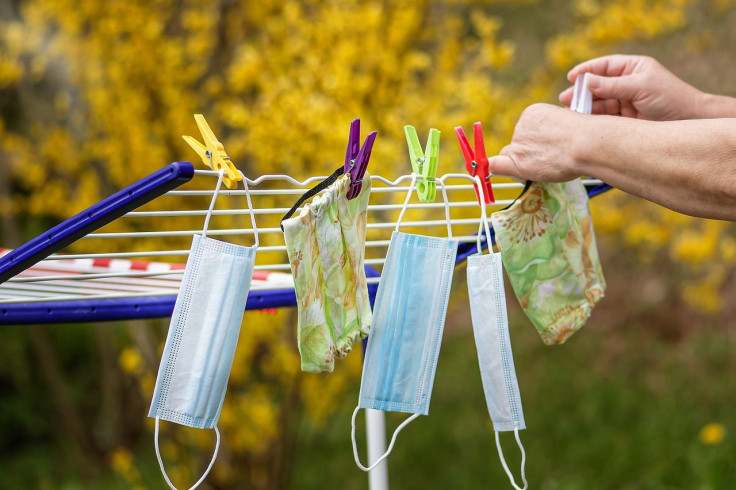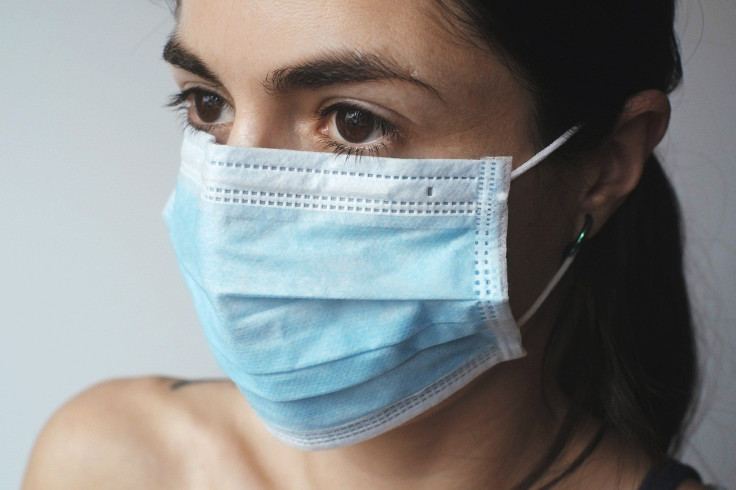5 Mistakes To Avoid When Wearing A Face Mask

KEY POINTS
- Face masks are now part of the regular daily attire of Americans
- There are still those who are not wearing their masks properly
- Improper wearing of masks may expose you to several risks
The U.S. Centers for Disease Control and Prevention has recommended that people must wear face masks or similar coverings when going out in public. Scientists believe the coronavirus mainly spreads through respiratory droplets. The CDC director has also estimated about 25% of people infected with the virus may not be having symptoms.
Because of this, it is the recommendation of the health body for everyone to wear masks, primarily to prevent anyone already infected from accidentally spreading the virus. To ensure proper protection, you need to put on the mask in a proper way and avoid simple yet significant gaffes.
The Face Mask Covers Only The Mouth
People with masks covering their mouths and not their noses are a common sight. The problem is you expose yourself or others if you are infected, to COVID-19. Dr. Thomas Russo, the Infectious Disease Division chief at the University of Buffalo, said you typically breathe completely or partially through the nose. If you are covering only your mouth, you risk becoming infected by breathing in viral particles.
If the mask is not covering your nose, you are also at risk of being contaminated by germs and droplets that collect on the exterior of the mask. “Likewise, if you’re infected and your mask is down just covering your mouth, if you sneeze ... then you can generate respiratory droplets in that fashion,” said Dr. Russo.
The Mask Comes In Contact With Your Stuff Or Body
If the deadly virus settles on your body, clothes, or face, and your loose face mask comes in contact with them, it might also be a cause for concern. Dr. Lucy Wilson, chair of the Department of Emergency Health at the University of Maryland in Baltimore County, said concerns on wearing masks improperly is based on contamination risk.
She said that if the mask’s interior touches stuff or a part of your body contaminated with coronavirus, there is a risk of infection. Dr. Wilson said such body parts could either be your forehead, neck, hair, or chin. The virus could also settle on stuff like clothes, pants, hanky, and other things.
If these areas or things come into contact with the mask’s interior and then returned to the mouth and nose area where vulnerable mucous membranes are abundant, an infection may occur. She also advised everyone to wash hands first before and after putting on or taking off a face mask.
Face Mask Hangs Loosely On The Face
When using a surgical or homemade cloth mask, make sure that the side gaps fit or are near your cheeks. According to Dr. Erin Sorrell, Department of Microbiology and Immunology assistant research professor at Georgetown University, you do not want your mask to billow or flare out on the sides. She said that while it is difficult to have a perfect seal with surgical or homemade masks, you need to ensure it properly fits.

Only The Tip Of The Nose Is Covered By Mask
The center of face masks is designed to be put on the bridge of the nose, not at the end of it. Doing so helps in creating the best seal with the mask. Dr. Erin Sorrell said if you put the mask at the tip of your nose, it is going to leave you with big air gaps which contaminants could flow through. “That’s why we recommend that the mask sits on the bridge of your nose and not the tip,” Dr. Sorrell said.
Reusing The Mask Without Cleaning It
If your mask is designed for reuse, you need to ensure it is not a contamination zone. According to the CDC, you can clean homemade fabric masks using a washing machine. For Dr. Sorrell, it is best to wash such masks every day to make sure you have a clean mask daily.
Other medical experts have said that disposable N95 masks can be cleaned by having it steaming it for 10 minutes over a pot of boiling water. Before using it again, however, you need to let it dry first. If a mask is already soiled or damaged, you already need to dispose of it.
© Copyright IBTimes 2024. All rights reserved.





















